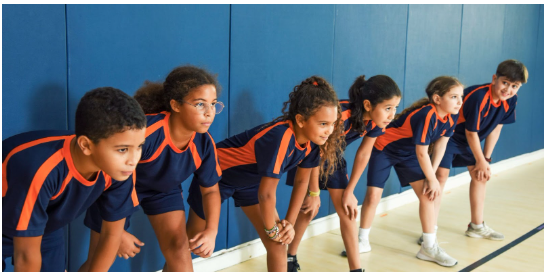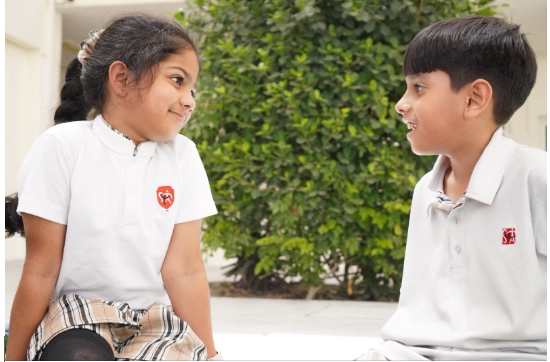Education
Trending
- How Toca Boca is Transforming Digital Play into a Creative Lifestyle
IntroductionDigital play has become an inseparable part of modern life. For children, teens, and eve...
Critical thinking involves analyzing, evaluating, and synthesizing information to make reasoned decisions. In education, it’s a vital skill that promotes independent thinking and problem-solving in real-world situations.
Teachers play a crucial role in shaping students’ ability to think critically. They create environments that encourage questioning, exploration, and logical reasoning, rather than mere memorization of facts and concepts.
Students who develop critical thinking are better equipped for challenges in both academic and personal life. They learn to weigh evidence, examine assumptions, and reach thoughtful conclusions based on logic.
Understanding what critical thinking entails helps educators structure their teaching strategies to focus on inquiry, interpretation, and meaningful engagement with content, fostering lifelong learners and thoughtful citizens.
2. Encouraging Curiosity and Questioning
Promoting curiosity in the classroom is the first step to developing critical thinking. Encouraging students to ask questions leads them to explore beyond surface-level understanding and seek deeper meaning.
Open-ended questions allow students to reflect on their own understanding and challenge assumptions. Teachers should create a safe space where all inquiries are welcomed and respected without judgment.
The more students ask “why,” the more they learn to challenge ideas, uncover gaps in knowledge, and develop the habit of inquiry essential to critical thought and academic growth.
Curiosity fosters a desire for exploration. This intrinsic motivation not only drives learning but also builds a mindset ready to question, reason, and evaluate diverse viewpoints and evidence.
3. Creating a Safe Learning Environment
A supportive classroom environment encourages students to express ideas without fear. They are more likely to take intellectual risks and engage in critical dialogue when they feel safe and respected.
Students need to feel that their thoughts matter. When teachers actively listen, provide constructive feedback, and avoid ridicule, learners become confident in sharing and defending their perspectives.
Discussions thrive in environments where diversity of thought is valued. A respectful culture promotes open exchange, allowing students to test arguments, consider alternatives, and arrive at informed conclusions.
Fostering mutual respect and empathy lays the foundation for critical conversations. It empowers students to engage in analytical reasoning while being open to different points of view and critique.
4. Integrating Real-World Problems
Using real-life scenarios in lessons connects classroom learning to the world outside. This relevance makes content more engaging and encourages students to apply critical thinking to complex situations.
Case studies, simulations, and current events challenge students to analyze information, evaluate outcomes, and propose solutions. This builds critical thinking by requiring evidence-based reasoning and practical application.
Students gain perspective when addressing real-world issues such as climate change, social justice, or technology ethics. They learn to balance facts, emotions, and societal values in their judgments.
Working through real problems enhances decision-making skills. It prepares students for future roles as active, thoughtful citizens who can contribute meaningfully to society with well-reasoned viewpoints.
5. Promoting Collaborative Learning
Group work fosters discussion and reflection. Students working together share ideas, question assumptions, and build knowledge through mutual exploration, enhancing their ability to think critically in social contexts.
Collaboration helps students see issues from multiple perspectives. Peer interaction often reveals diverse approaches, encouraging evaluation of differing viewpoints and refining one’s reasoning through dialogue.
Teachers can structure activities that require consensus, debate, or joint problem-solving. These formats stimulate analytical thinking and build skills in negotiation, empathy, and collective decision-making.
Collaborative learning also builds communication skills, which are essential for articulating thoughts clearly, listening actively, and developing persuasive, reasoned arguments with others in a respectful manner.
6. Teaching Reflective Thinking
Reflection is the process of examining one’s thinking, decisions, and learning processes. It helps students recognize their strengths, identify biases, and improve future decision-making through self-awareness.
Teachers can use journals, portfolios, or end-of-lesson reflections to encourage students to think about how they arrived at conclusions and what they might do differently next time.
Asking students to reflect on their learning experiences promotes metacognition. They become more conscious of how they think and learn, which strengthens their ability to regulate and adjust strategies.
Reflective thinking deepens understanding and enhances critical reasoning. It empowers learners to take ownership of their thoughts, become more intentional, and grow continuously in intellectual maturity.
7. Using Socratic Questioning Techniques
Socratic questioning encourages deep thinking by prompting students to justify answers. It guides learners to examine the foundation of their ideas through a disciplined and methodical line of inquiry.
Rather than giving answers, teachers ask probing questions like “What do you mean by that?” or “What evidence supports this?” This helps students clarify, elaborate, and critically evaluate arguments.
This method reveals contradictions, assumptions, or vague thinking, helping students to refine their reasoning and build logically consistent arguments based on sound principles and facts.
Socratic dialogue nurtures thoughtful communication. It turns passive listeners into active thinkers who can challenge opinions, seek clarity, and support claims with well-reasoned logic and insight.
8. Integrating Critical Reading and Writing
Critical reading involves analyzing texts beyond the literal meaning. Students learn to detect bias, evaluate sources, and assess arguments, developing a keen eye for logical flaws and rhetorical techniques.
Teachers should guide students to ask: Who is the author? What’s their purpose? What evidence do they present? These questions sharpen critical awareness and understanding of content.
In writing, students practice organizing ideas, citing evidence, and articulating viewpoints clearly. This process deepens their understanding and strengthens their ability to argue persuasively and coherently.
Both reading and writing offer structured opportunities to evaluate claims, challenge assumptions, and build intellectual discipline—key habits in becoming critical thinkers who question, not just consume information.
9. Encouraging Diverse Viewpoints
Exposure to different perspectives expands thinking. When students engage with opinions unlike their own, they learn to analyze arguments objectively and consider broader implications of various beliefs.
Diversity of thought is essential in critical thinking. It helps students challenge their biases, build empathy, and evaluate ideas on merit rather than conformity or popularity.
Teachers can introduce diverse materials, perspectives, and guest speakers to stimulate discussion. This challenges students to reflect on complex issues and explore alternatives in respectful dialogue.
Listening to others enhances analytical depth. It teaches that disagreement doesn’t mean disrespect, and that complexity often requires nuanced, multi-dimensional approaches to understanding truth or solving problems.
10. Incorporating Technology Thoughtfully
Technology can support critical thinking when used strategically. Interactive simulations, research tools, and discussion forums provide dynamic ways for students to explore, analyze, and synthesize information.
Online platforms allow collaboration and global perspectives. Students can engage in debates, peer review, and interdisciplinary research, learning how to assess digital content critically and responsibly.
Teachers must teach digital literacy, including how to detect misinformation, evaluate credibility, and navigate data overload. These skills are fundamental in the digital age for sound judgment and reasoning.
Thoughtful use of technology empowers students to become discerning consumers and creators of knowledge. It transforms passive learning into active inquiry driven by exploration and verification.
11. Modeling Critical Thinking as Educators
Teachers are role models in thinking. By showing how they reason through problems, question sources, and make decisions, educators demonstrate the critical thinking process in action.
When teachers share their thought processes, including doubts or changes in opinion, it shows students that critical thinking is a flexible, evolving practice—not a rigid formula.
Modeling humility and openness to feedback teaches students that it’s okay to revise beliefs when presented with new evidence, reinforcing intellectual honesty and curiosity.
Educators who model critical inquiry foster a culture of learning where questioning is valued. Students are more likely to emulate these habits when they see them practiced daily and authentically.
12. Assessing Critical Thinking Skills
Traditional tests often fail to capture critical thinking. Alternative assessments like projects, essays, and presentations provide better insight into students’ ability to analyze, synthesize, and evaluate information.
Rubrics that focus on reasoning, evidence, and clarity help measure critical thinking objectively. Clear criteria guide students in developing thoughtful, well-structured responses and arguments.
Teachers should give feedback that encourages deeper thinking. Instead of focusing solely on correctness, assessments should highlight logical structure, originality, and the use of relevant data. Assessment drives learning. By valuing critical thinking in evaluations, teachers signal its importance and motivate students to invest in developing skills that matter beyond the classroom walls.
Recent Articles

About Admin
This post has been published by the admin of our website, responsible for content management, quality checks, and providing valuable information to our users.










